[Lupines: The Genus Lupinus East of the Cascade Mts. of Oregon and Washington]
Asotin Silk Lupine, Asotin Silky Lupine
Lupinus sericeus var. asotinensis
Synonyms: Lupinus garfieldensis, Lupinus sericeus ssp. asotinensis
 -
- 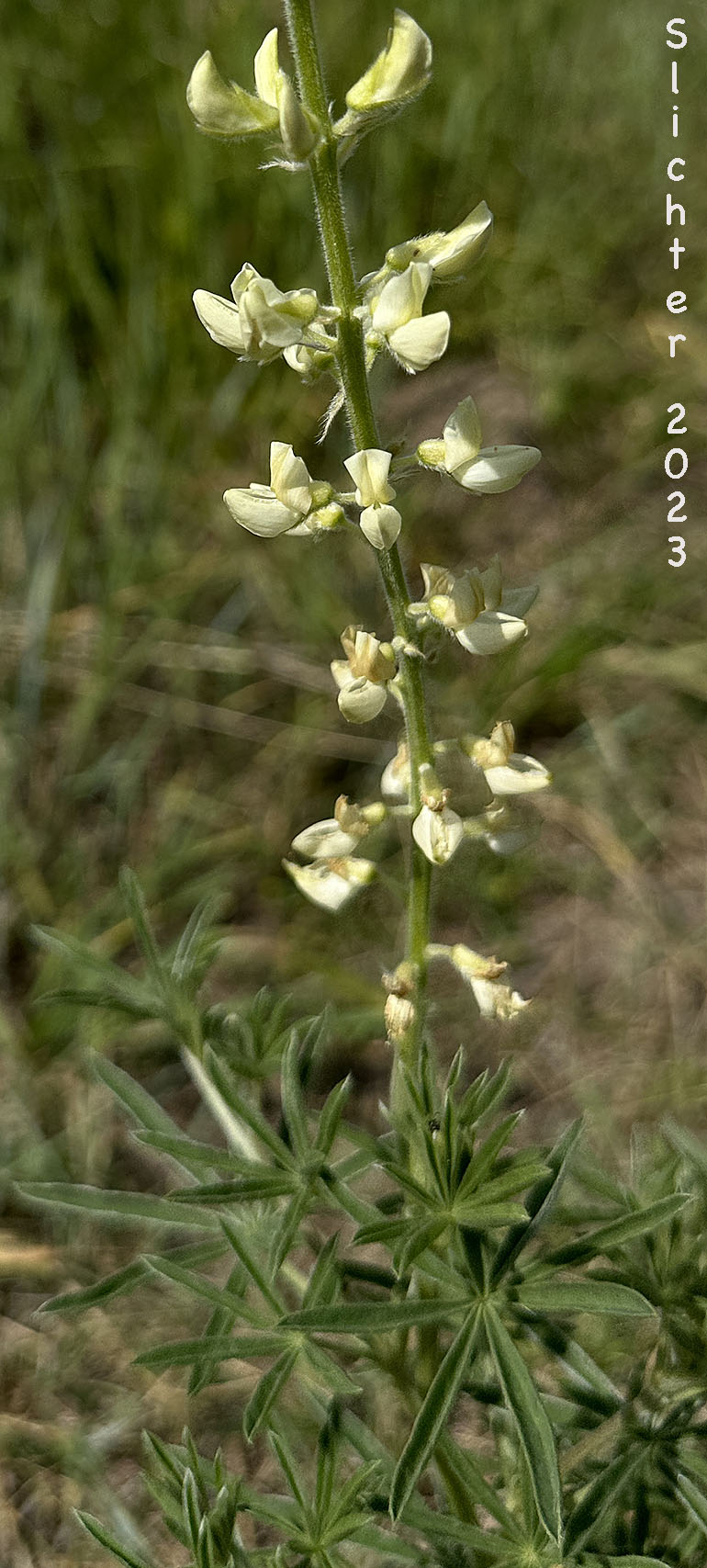
The photo at left shows a close-up of the keel of Asotin silky lupine as seen from Asotin County, southeastern Washington.......June 25, 2007. Note the numerous hairs lining the upper margin of the keel. The photo at right shows the inflorescence of Asotin silky lupine along Sourdough Creek, Asotin Wildlife Area and Umatilla National Forest.....June 16, 2023.
 The photo at right shows a close-up of the flower of Asotin silky lupine as seen from Asotin County, southeastern Washington........June 25, 2007. Note that the erect banner sits well back of the midlength of the long wings.
The photo at right shows a close-up of the flower of Asotin silky lupine as seen from Asotin County, southeastern Washington........June 25, 2007. Note that the erect banner sits well back of the midlength of the long wings.
Characteristics:
The one
to three erect flower stems of Asotin silky lupine rise from 20-50 cm high. They are usually unbranched
or perhaps with several branches to the stem. The herbage is usually somewhat
silvery or rust-colored from the numerous spreading to appressed hairs on the
leaves and stems. The herbage is not however, as dense and silvery as that found
in velvet lupine which may grow in the same habitats.
The hairs are of two lengths. The leaves are mainly on the stems (especially
at blooming times) with the lower petioles as much as 3 times longer than the
leaf blades. The leaves become reduced in size on the upper stems with the petioles roughly
the same length as the blades. The leaves are palmately-compound with 7-9 oblanceolate
leaflets, each 3-6 cm long and 3-6 mm wide. Both the upper and lower surfaces of the leaflets are covered with ascending (but not perpendicular) hairs.
The inflorescence is an elongate raceme of fairly loosely arranged flowers. The racemes vary in length from 10-15 cm long. The
flowers are largely a soft whitish or light yellowish color with 2 darker markings
on the banner petal. The
back of the banner is sparsely to densely haired with microscopic hairs. If sparsely haired on the back of the banner, the hairs may be found next to or under the upper lobe of the calyx. The
calyx is silky with a deeply split calyx. The upper lobe is bidentated while
the lower is entire. The banner is well reflexed from the keel with an index
from 14-25. It also sits well back from the central portion of the elongated wings. The keel has ciliate hairs along much of its upper edge. The tip
of the keel turns upwards slightly. The pods are silky, ranging in length from
2-3 cm long and about 1 cm wide. They contain 3-5 seeds.
Subspecies of Silky Lupine Found East of the Cascade Mts. (from the USDA Plants Website):
Lupinus garfieldensis (formerly Lupinus sericeus var. asotinensis):
Subspecies sericeus var. egglestonianus:
Subspeices sericeus var. flexuosus (formerly variety fikeranus):
Subspecies sericeus var. maximus:
Subspecies sericeus var. sericeus:
Subspecies sericeus var. thompsonianus (formerly Lupinus latifolius var. thompsonianus):
Subspecies sericeus var. wallowensis:
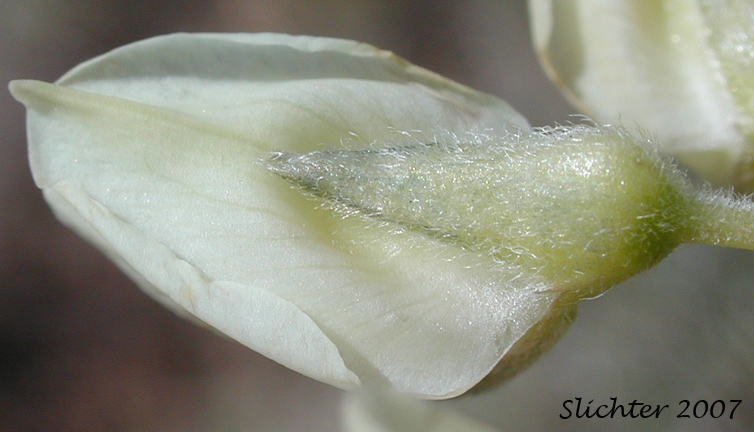
The photo above shows a close-up of the back of the banner as well as the silky-haired calyx of Asotin silky lupine as seen from Asotin County, southeastern Washington.........June 25, 2007. On this flower, the hairs on the back of the banner are located next to the calyx.
Habitat:
Asotin silky lupine may be found on well drained soils on canyon slopes and ridges from
the lowlands to moderate elevation in the foothills. It is most typically found amongst bunchgrasses on grasslands
but may be found to the lower elevations of the ponderosa pine forest near 4000'.
Range
Asotin silky lupine may be found south of the Snake River in Garfield and Asotin counties, as well as north of the Snake River in southern Whitman county. I am currently unsure whether it might be found in adjacent northeastern Oregon.
 -
-  -
- 
Asotin silky lupine as seen along Smoothing Iron Road in the Asotin Wildlife Area, Asotin County, WA........June 3, 2017.
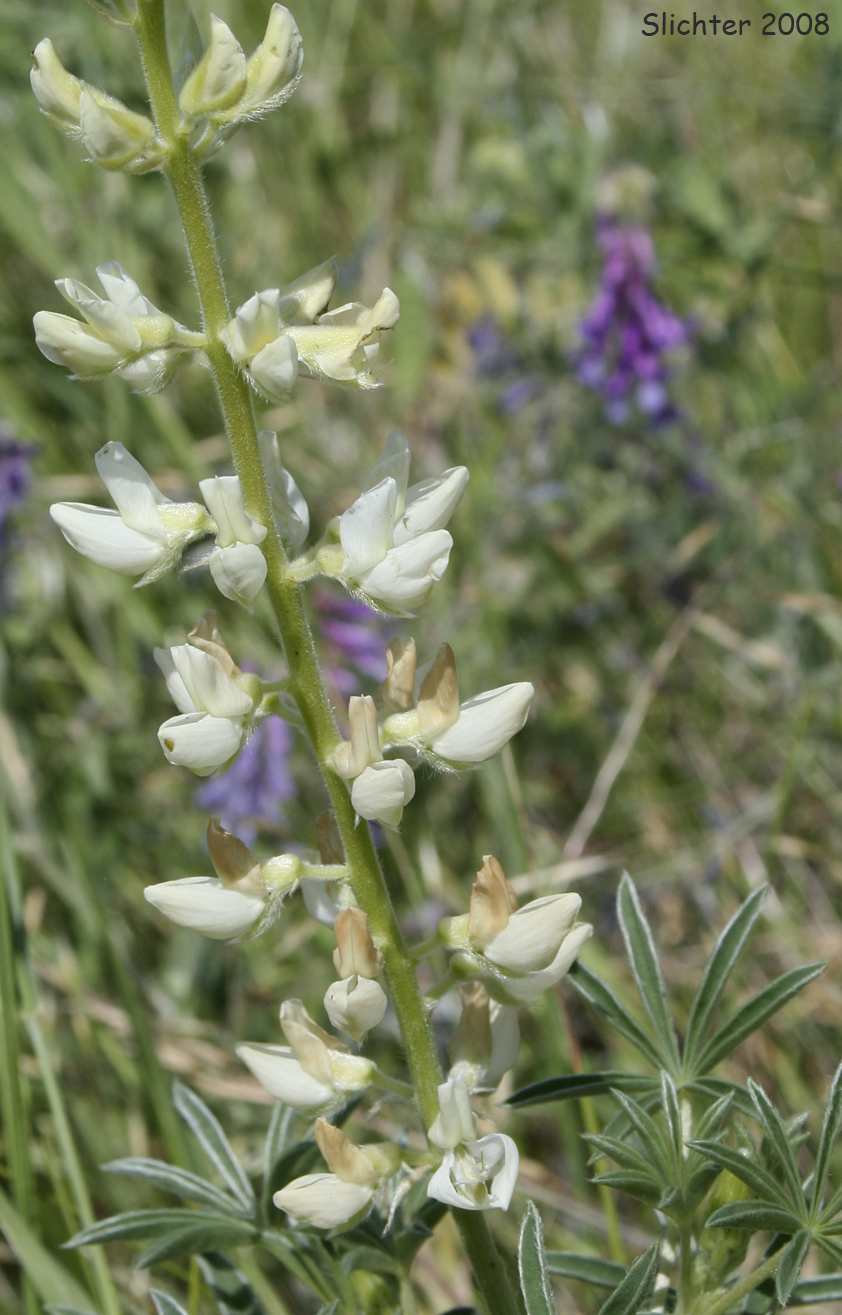 -
-  -
-  -
- 
These 4 photos show Asotin silky lupine as seen in Asotin County, WA........July 6, 2008.
 -
- 
These 2 photos show Asotin silky lupine as seen in Garfield County, WA.......July 6, 2008.
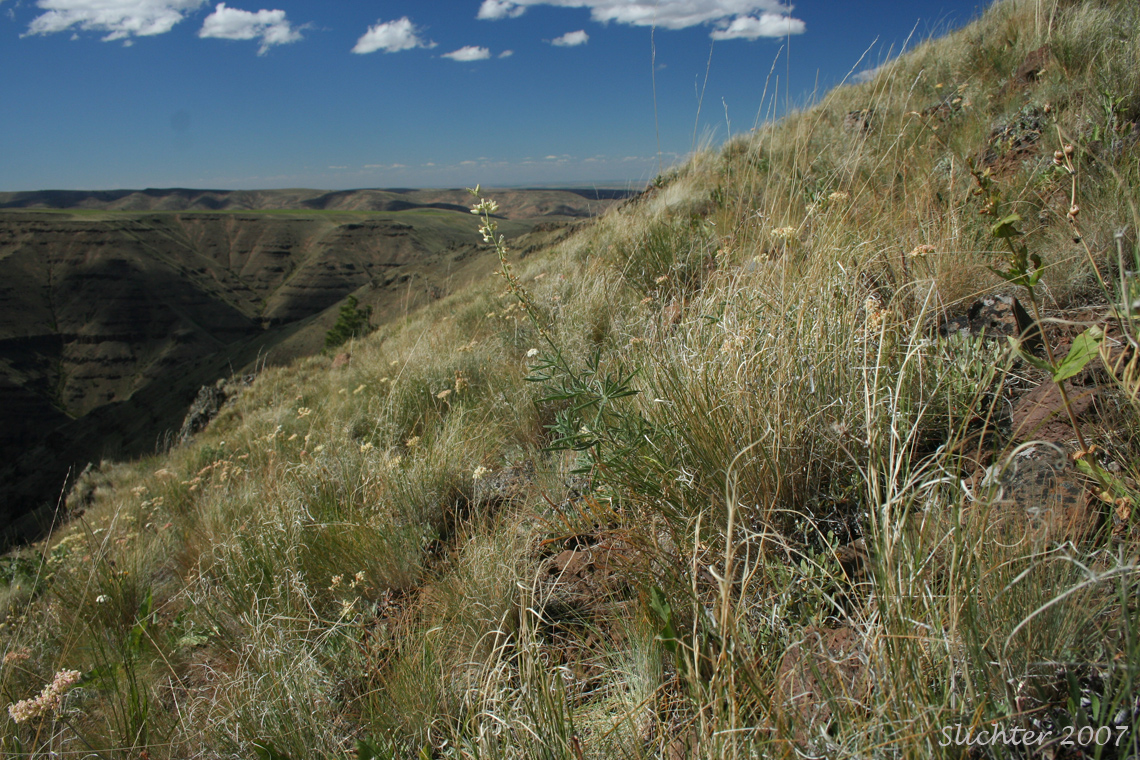 -
- 
The photo above shows the grassland habitat of Asotin silky lupine as seen in Asotin county, southeastern Washington.......June 25, 2007.
 -
-  -
- 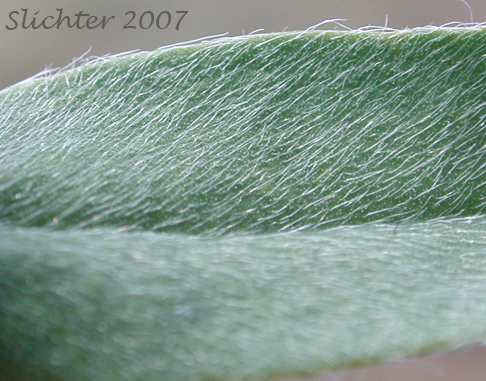 -
- 
The photos above show various detail views of Asotin silky lupine as seen from Asotin County, southeastern Washington.........June 25, 2007.
 -
- 
 -
- 
Asotin silky lupine as seen in Asotin county, southeastern Washington..........June 10, 2013.
Paul Slichter






















